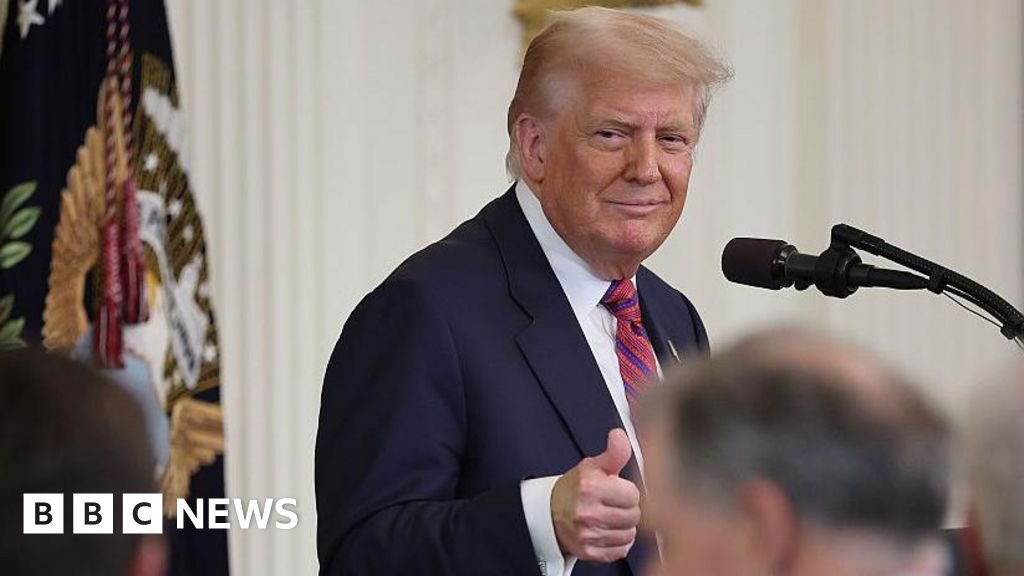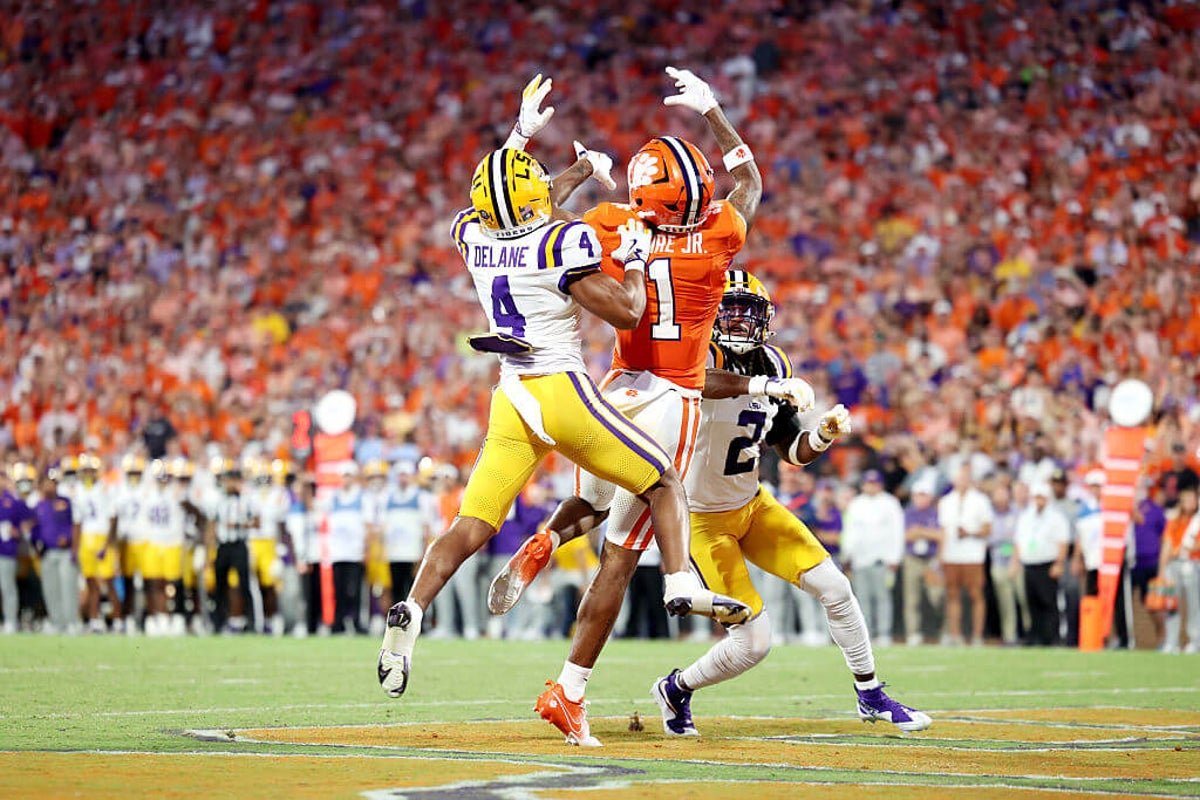CLEMSON, S.C. — Brian Kelly put everything into this game. He embraced the pressure for LSU to win an opener for the first time in six years. He did it despite the risk, despite how hard it would be to end that streak Saturday with a win at No. 4 Clemson.
And then, despite seeming multiple mistakes, and a halftime deficit, No. 9 LSU pulled it off, beating Clemson 17-10. The streak is over, and Kelly has a validating win, one of the biggest of his four-year LSU tenure.
This offseason, Kelly had Clemson paw prints put all over the LSU facility, from the weight room to hallways. This after LSU lost every season opener since 2020, culminating in last year’s frustrated postgame news conference where Kelly pounded the table after losing to Southern California.
“We’ve made it a specific goal,” Kelly said in July during SEC media days. “I think it was important to have a tangible, specific goal for us to start the season. And I think it’s important our kids want that. They can taste it.”
For a while, though, it looked like the streak would be extended. Clemson scored first and took a 10-3 lead into halftime, after Kelly made the dubious decision to go for it on fourth down from the 13 with 15 seconds left. It failed, but LSU took over in the third quarter: Quarterback Garrett Nussmeier got hot, leading two touchdown drives, while the LSU defense kept making big stops.
Battle of Heisman contending QBs
After Arch Manning and No. 1 Texas lost earlier in the day, the two players with the next-best Heisman odds — LSU’s Nussmeier and Clemson quarterback Cade Klubnik — went head to head a few hours later.
The quarterback duel never materialized, though. Instead, the defenses dominated. Neither quarterback threw a first-half touchdown pass. Klubnik finished 19-of-38 for 230 yards and an interception. Nussmeier went 28-of-38 for 230 yards and one touchdown.
The two experienced, talented passers will have at least 11 more opportunities to state their cases this season, but in Nussmeier’s case, coming away with the win gives him the inside track to the trophy even after an average performance against Clemson’s elite defense line. His numbers won’t offer him much value, but a road win against a top-10 opponent and possible future College Football Playoff team and conference champion will.
Nussmeier helped fuel LSU’s second-half comeback, and even with the modest numbers, he’s the likely new favorite for the Heisman Trophy after Week 1. — David Ubben
The rise of the LSU defense?
Fixing the LSU defense has been a multi-year focus for Kelly. It took small steps forward last year. This game showed another, possibly more tangible, improvement.
Two years ago, LSU had one of the worst defenses at the power-conference level, wasting Jayden Daniels’ Heisman season, and leading Kelly to change defensive coordinators. In Blake Baker’s first year, there was modest improvement, up to 14th in the SEC in scoring defense and yards-per-play allowed.
This season started on an even better note: Two straight three-and-outs, with Clemson attaining minus-10 yards. One of those came after the offense fumbled the ball just outside the red zone; LSU’s defense stood.
Clemson finished the first half with 110 yards. LSU’s offense wasn’t getting many results, but its defense kept the offense in the game long enough.
The run defense stifled Clemson. The pass rush kept Klubnik uncomfortable, leading to his interception in the third quarter. Harold Perkins Jr., back healthy after missing most of last year, had a sack playing out of his edge role. And LSU held on fourth-and-4 on Clemson’s final drive with a chance to tie the score. LSU has always had talent, it was confounding why it couldn’t have a better defense. The Tigers may finally be getting there.
The Tigers made a concerted effort to improve their defensive personnel with several additions along the defensive front and in the secondary. Transfer corner Mansoor Delane (Virginia Tech) came up with a clutch pass break up on a critical fourth-down attempt by Clemson midway in the fourth quarter. Defensive line transfers Bernard Gooden (USF), Jack Pyburn (Florida) and Patrick Payton (Florida State) have elevated the talent level for LSU with that unit, and it looked considerably improved. — Antonio Morales and Seth Emerson
Controversial call?
LSU had what looked to be an apparent touchdown called off by officials on replay, on a consequential play in the second half with the score tied.
Nussmeier threw a deep pass down the sideline that was caught by receiver Barion Brown and ruled out at the 1-yard line. Replay showed that Brown crossed the goal line, but he lost the ball after hitting the ground, following one or two steps.
Officials ruled he didn’t maintain possession of the ball, a play reminiscent of Dez Bryant for the Dallas Cowboys in 2015 or Calvin Johnson with the Detroit Lions in 2010.
ESPN’s rules analyst Bill Lemonnier, a former Big Ten official, said he would’ve ruled LSU’s play possession before Brown hit the ground.
“He’s got firm control. He’s got a foot down inbounds. He’s making a football move, and he’s even hit the pylon,” Lemonnier said on the ABC broadcast. “They’re saying when he hit the ground with the ball movement, that created the incomplete pass. In my view, I would’ve (already) had a touchdown.”
Still, LSU went on to take the lead early in the fourth quarter and held on for the win. — Chris Vannni
Real Death Valley?
Clemson’s mascot — he doesn’t have a name and is known only as The Tiger — tapped a black sign he was holding in the first quarter as the crowd roared for an LSU third down.
“Welcome to the real Death Valley,” it read.
It’s been a constant debate in the sport that crescendoed this week as the two sides clashed in Clemson. In my view? As elite an atmosphere as Clemson provides — it’s as loud as almost anything in the SEC — it still takes a backseat to LSU.
Saturday night was my first time seeing a game at Clemson. A prime-time, season-opening showdown between a pair of top-10 teams is as good as it gets.
Last year, I made my first two trips to LSU’s Death Valley to see the Tigers take on Ole Miss (they won in overtime) and Alabama (the Crimson Tide rolled). It’s as apples to apples a comparison as one can get.
Both are loud. Both packed their respective stadiums. Clemson, frankly, leans a little too hard into pounding bass from the blaring speakers and a DJ whose turntables are set up beside the jumbotron. Clemson’s pregame presentation is elite — the build up to players running down the hill is amazing — and there’s never a lull in the action or a moment when the in-game presentation allows the energy in the stadium to dip.
But LSU’s feels a little more unique with traditions like “Callin’ Baton Rouge,” to say nothing of the gumbo-fueled tailgating atmosphere that serves as a beacon of Cajun culture. It’s literally a different flavor that helps put LSU over the top as the better atmosphere, as well as a venue in Tiger Stadium that seats 20,000 more fans than its counterpart in Clemson.
The somewhat murky history behind which school coined the name when — Clemson was probably first — is secondary to me. I’m going with which place is louder and which place would better introduce an alien to a culture all its own. That’s LSU. — Ubben
(Photo: Katie Januck / Getty Images)


























